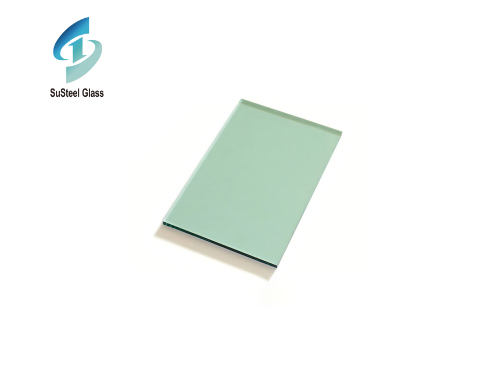
The purpose of float glass annealing is to reduce and prevent excessive residual internal stress and optical inhomogeneity in glass products and stabilize the internal structure of glass.
Float glass annealing can be divided into two main processes: one is the reduction or disappearance of the internal stress in the glass, the other is to prevent the re-generation of internal stress. The reduction and elimination of internal stress in glass is based on relaxation theory. The so-called internal stress relaxation refers to the process of dissipating internal stress under the action of molecular thermal movement. The relaxation speed of internal stress largely depends on the temperature of glass.
The common technological problems in the annealing process of float glass are as follows:
1. Asymmetrical cooling of the upper and lower surfaces of the glass belt
Glass annealing in areas, such as upper and lower surface cooling intensity is different, when the glass is cooled to room temperature equilibrium, will cause the asymmetry of stress distribution, stress to soon cold side offset, fast cooling surface compressive stress, slow cooling surface tensile stress, if the raw glass is big enough, the stress distribution in glass imbalance will cause deformation, bending or warp. If the stress generated exceeds the allowable value, the explosion will occur.
2. The horizontal temperature of the glass belt is not uniform
The temperature is symmetrically distributed in the center line, but the edges are cooler or hotter than the middle. There is a temperature difference in the width direction of the glass strip, which will also produce thermal stress.
When the edge of the glass belt is cooler than the middle, if in the annealing temperature area, the edge compression stress, the middle tension stress; If the glass is under the annealing temperature, the edge of the tension stress, the middle compressive stress. When the edge of the glass plate is hotter than the middle, the stress in the direction of the plate surface is opposite to the above.
It is well known that the compressive strength of glass is about ten times greater than the tensile strength, so glass sheets usually break first on the sheet surface under tensile stress, and then the cracks may continue to develop into the compressive stress zone. Therefore, the temporary stress is more destructive to the glass. As long as the tensile stress generated is equal to or slightly greater than the tensile strength of the glass, the float glass will also rupture by itself without any external force.
 High Purity Tin Ingot: Essential Uses and Key Advantages
High Purity Tin Ingot: Essential Uses and Key Advantages
 Burglar-Resistant Glass: Enhancing Security and Peace of Mind
Burglar-Resistant Glass: Enhancing Security and Peace of Mind
 Exploring the World of Green Tinted Glass Products: Versatility and Sustainability
Exploring the World of Green Tinted Glass Products: Versatility and Sustainability


